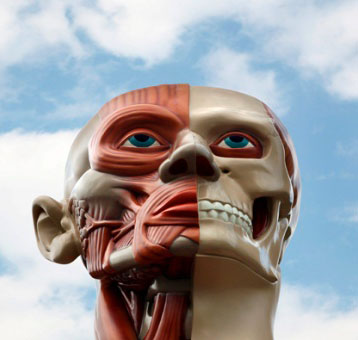Facial diplegia as a presentation of Guillain-Barré syndrome
Keywords:
Cerebral palsy, Guillain-Barré syndrome.Abstract
Introduction: the bilateral facial palsy is a rare symptom in medical practice, it represents between 0.6 and 1.6% of various series of facial paralysis. The facial nerve can be frequently affected in Guillain-Barré syndrome, but unilaterally. It is unusual for its initial presentation to observe a bilateral facial paralysis, without other neurological focus.
Case report: a 54-year old male patient, attending to the emergency room at Abel Santamaria Cuadrado General University Hospital with a bilateral facial paralysis without other neurological signs, which symptoms appeared 6 days after the beginning of the diplegia. The atypical presentation of Guillain-Barré syndrome with its onset of facial diplegia before taking the remaining peripheral nerves is rare; it stressed the importance of the clinical suspicion together with the laboratory findings; as a result the patient can benefit from a prompt treatment.
Discussion: the case described that peripheral polyneuropathy symptoms appeared six days after the onset of bilateral facial weakness. Generally facial diplegia appears after the motor symptoms of Guillain-Barré syndrome or associated with the phase of osteotendinous hyporeflexia.
Downloads
References
1. Vakharia K, Vakharia K. Bell's Palsy. Facial Plastic Surgery Clinics of North America. Volume 24, Issue 1, February 2016, Pages 1–10. Disponible en: https://www.clinicalkey.es/#!/content/playContent/1-s2.0-S106474061500084X?returnurl=http:%2F%2Flinkinghub.elsevier.com%2Fretrieve%2Fpii%2FS106474061500084X%3Fshowall%3Dtrue&referrer=http:%2F%2Fwww.sciencedirect.com%2Fscience%2Farticle%2Fpii%2FS106474061500084X.
2. Y. H. Kim, I. J. Choi, H. M. Kim, J. H. Ban, C. H. Cho, and J. H. Ahn, “Bilateral simultaneous facial nerve palsy: clinical analysis in seven cases,” Otology and Neurotology 2008; 29(3): 397–400, 2008. Disponible en: https://www.researchgate.net/publication/5623610_Bilateral_simultaneous_facial_nerve_palsy_Clinical_analysis_in_seven_cases.
3. Sejvar JJ, Baughman AL, Wise M, Morgan OW. Population incidence of Guillain-Barré syndrome: a systematic review and meta-analysis. Neuroepidemiology. [Internet] 2011 [Citado 17 de octubre de 2013]; 36(2): [Aprox. 10p.]. Disponible en :http://www.karger.com/Article/Pdf/324710.
4. Inaloo S1, Katibeh P1. Guillain-Barré syndrome presenting with bilateral facial nerve palsy.Iran J Child Neurol.2014 Winter;8(1):70-2. Disponible en: http://www.ncbi.nlm.nih.gov/pmc/articles/PMC3943056/.
5. Dal Verme A1, Acosta P, Margan M, Pagnini C, Dellepiane E, Peralta C. Facial diplegia with atypical paresthesia.A variant of Guillain-Barré syndrome.Medicina (B Aires). 2015;75(3):178-80. Disponible en: http://www.medicinabuenosaires.com/PMID/26117611.pdf.
6. Wakerley BR1,2, Yuki N3. Isolated facial diplegia in Guillain-Barré syndrome: Bifacial weakness with paresthesias. Muscle Nerve. 2015 Dec;52(6):927-32. doi: 10.1002/mus.24887. Disponible en: http://www.ncbi.nlm.nih.gov/pubmed/26315943.
7.Morgan C1, Fuller G1, Wakerley BR1,2. Bifacial weakness with paresthesias: Serial nerve conduction studies indicate diffuse demyelinating neuropathy. Muscle Nerve.2016 Jan 20.doi: 10.1002/mus.25028. Disponible en: http://www.ncbi.nlm.nih.gov/pubmed/26790030.
8. Wakerley BR1, Yuki N2. Mimics and chameleons in Guillain-Barré and Miller Fisher syndromes Pract Neurol. 2015 Apr;15(2):90-9. doi: 10.1136/practneurol-2014-000937. Epub 2014 Sep 19. Disponible en: http://pn.bmj.com/content/15/2/90.long.
9. Sathirapanya P. Isolated and bilateral simultaneous facial palsy disclosing early human immunodeficiency virus infection Singapore Med J. 2015 Jun; 56(6): e105–e106. doi: 10.11622/smedj.2015095PMCID: PMC4469862. Disponible en: http://www.ncbi.nlm.nih.gov/pmc/articles/pmid/26106247/.
10. Kumar R1 and Mittal RS2 Post Traumatic Delayed Bilateral Facial Nerve Palsy (FNP): Diagnostic Dilemma of Expressionless Face J ClinDiagn Res. 2015 Apr; 9(4): PD15–PD16. Published online 2015 Apr 1. Disponible: http://www.ncbi.nlm.nih.gov/pmc/articles/PMC4437113/.
11. Chan YC, Therimadasamy AK, Sainuddin NM, et al. Serial electrophysiological studies in a Guillain-Barré subtype with bilateral facial neuropathy. Clinical Neurophysiology, 2016-02-01, Volúmen 127, Número 2, Pages 1694-1699, Disponible en: https://www.clinicalkey.es/#!/content/playContent/1-s2.0-S1388245715010871?returnurl=http:%2F%2Flinkinghub.elsevier.com%2Fretrieve%2Fpii%2FS1388245715010871%3Fshowall%3Dtrue&referrer=http:%2F%2Fwww.sciencedirect.com%2Fscience%2Farticle%2Fpii%2FS1388245715010871.

Published
How to Cite
Issue
Section
License
Authors who have publications with this journal agree to the following terms: Authors will retain their copyrights and grant the journal the right of first publication of their work, which will be publication of their work, which will be simultaneously subject to the Creative Commons Attribution License (CC-BY-NC 4.0) that allows third parties to share the work as long as its author and first publication in this journal are indicated.
Authors may adopt other non-exclusive license agreements for distribution of the published version of the work (e.g.: deposit it in an institutional telematic archive or publish it in a volume). Likewise, and according to the recommendations of the Medical Sciences Editorial (ECIMED), authors must declare in each article their contribution according to the CRediT taxonomy (contributor roles). This taxonomy includes 14 roles, which can be used to represent the tasks typically performed by contributors in scientific academic production. It should be consulted in monograph) whenever initial publication in this journal is indicated. Authors are allowed and encouraged to disseminate their work through the Internet (e.g., in institutional telematic archives or on their web page) before and during the submission process, which may produce interesting exchanges and increase citations of the published work. (See The effect of open access). https://casrai.org/credit/


